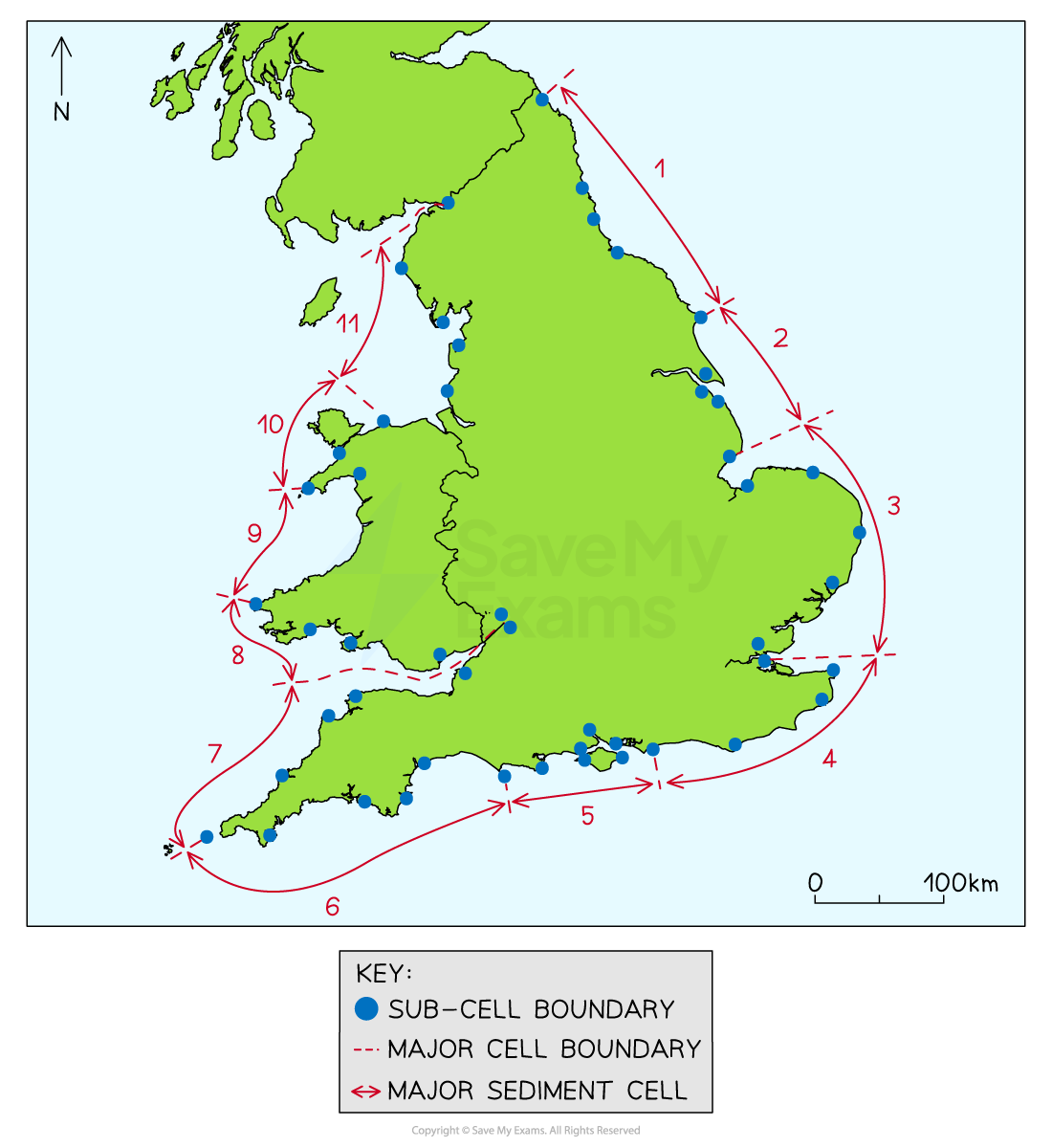Influences on Sediment Transport
- Material in the sea arrives from many sources:
- Eroded from cliffs
- Transported by longshore drift along the coastline
- Brought inland from offshore by constructive waves
- Carried to the coastline by a river
Once in the water, the material is moved in different ways:
-
- Traction
- Saltation
- Suspension
- Solution
Direction of wave attack
- The direction that the waves are coming from is the main factor affecting the direction of sediment transport
Longshore (littoral) drift
- Longshore (littoral) drift is the main process of deposition and transportation along the coast
- Influenced by the prevailing wind, waves approach the beach at an angle
- As the waves break, the swash carries material up the beach at the same angle
- As the swash dies away, the backwash carries the material down the beach at right angles (90°)
- The process repeats, transporting material along the beach in a zig-zag movement
- Offshore currents can contribute to the movement of sediment along or up the beach

The process of longshore (littoral) drift
Current
- Current is the flow of water in a specific direction which transports sediment
-
- Surface currents are formed mainly by wind
- Deepwater currents are also called thermohaline circulation and are caused by density differences

Thermohaline circulation
- Tidal currents are associated with rising and falling tides, the greater the tidal range the greater the strength of the currents
- Rip currents are underwater currents that occur near the coastline and transport sediment a few metres out to sea
Tides
- The gravitational pull of the sun or moon causes tides
- The difference between high and low tide is known as the tidal range
- Larger tidal ranges produce stronger tidal currents and this can transport more sediment, particularly in the areas around estuaries
- Deposition occurs when waves lose energy
- Waves lose energy when:
- The wind slows or changes direction
- The wave experiences friction, usually with the sea floor as the depth decreases
- When the coastline changes direction such as at an estuary or headland
- It is a gradual rather than immediate process
- High energy coastlines deposit large rocks and shingle but generally maintain enough energy to carry smaller sediment particles
- This is why these types of coastlines tend to have rocky beaches, such as Brighton on the south coast of England
- Low energy coastlines deposit smaller sediment due to low wave velocity, creating sandy beaches






